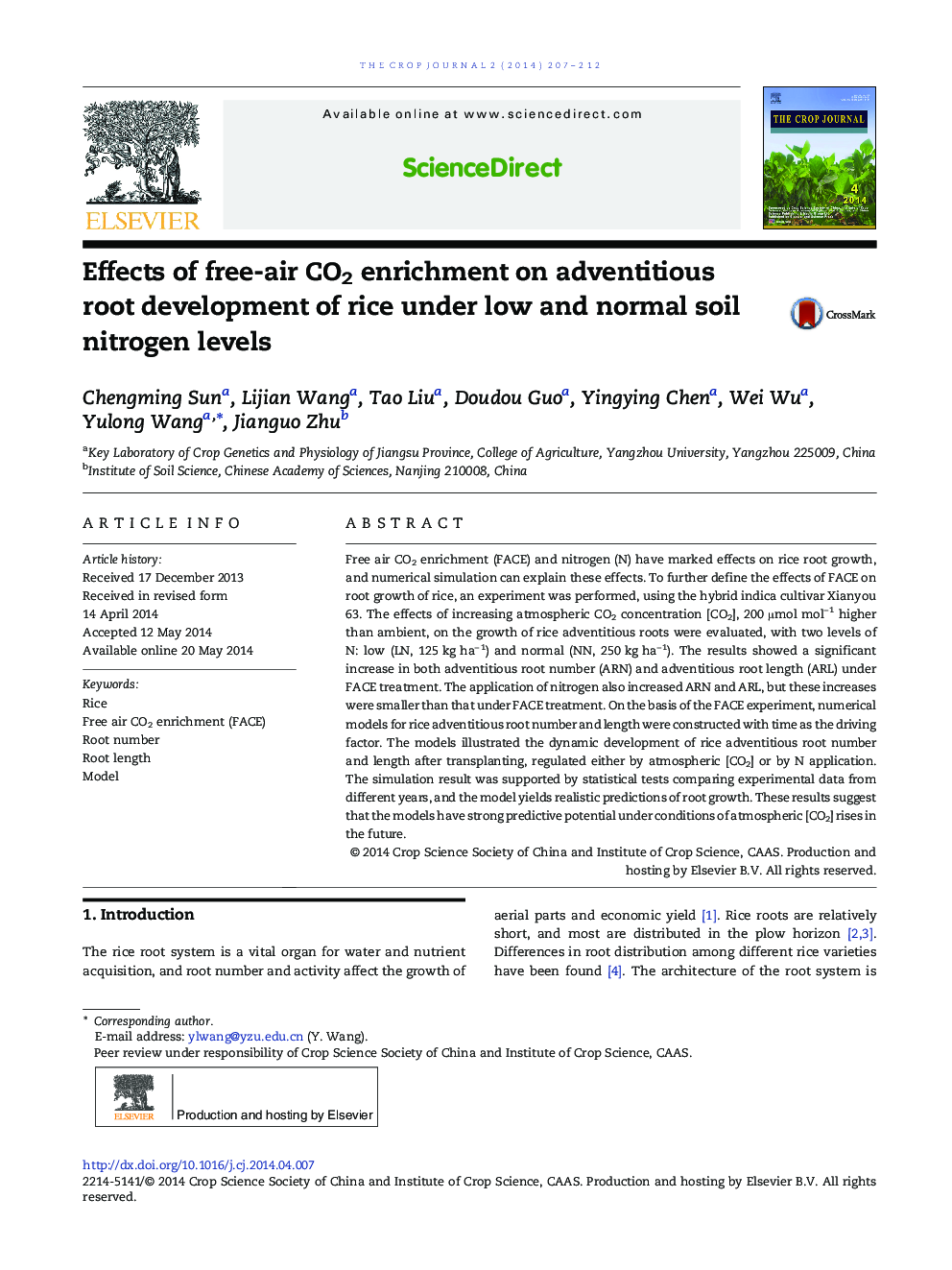| Article ID | Journal | Published Year | Pages | File Type |
|---|---|---|---|---|
| 2079550 | The Crop Journal | 2014 | 6 Pages |
Free air CO2 enrichment (FACE) and nitrogen (N) have marked effects on rice root growth, and numerical simulation can explain these effects. To further define the effects of FACE on root growth of rice, an experiment was performed, using the hybrid indica cultivar Xianyou 63. The effects of increasing atmospheric CO2 concentration [CO2], 200 μmol mol− 1 higher than ambient, on the growth of rice adventitious roots were evaluated, with two levels of N: low (LN, 125 kg ha− 1) and normal (NN, 250 kg ha− 1). The results showed a significant increase in both adventitious root number (ARN) and adventitious root length (ARL) under FACE treatment. The application of nitrogen also increased ARN and ARL, but these increases were smaller than that under FACE treatment. On the basis of the FACE experiment, numerical models for rice adventitious root number and length were constructed with time as the driving factor. The models illustrated the dynamic development of rice adventitious root number and length after transplanting, regulated either by atmospheric [CO2] or by N application. The simulation result was supported by statistical tests comparing experimental data from different years, and the model yields realistic predictions of root growth. These results suggest that the models have strong predictive potential under conditions of atmospheric [CO2] rises in the future.
